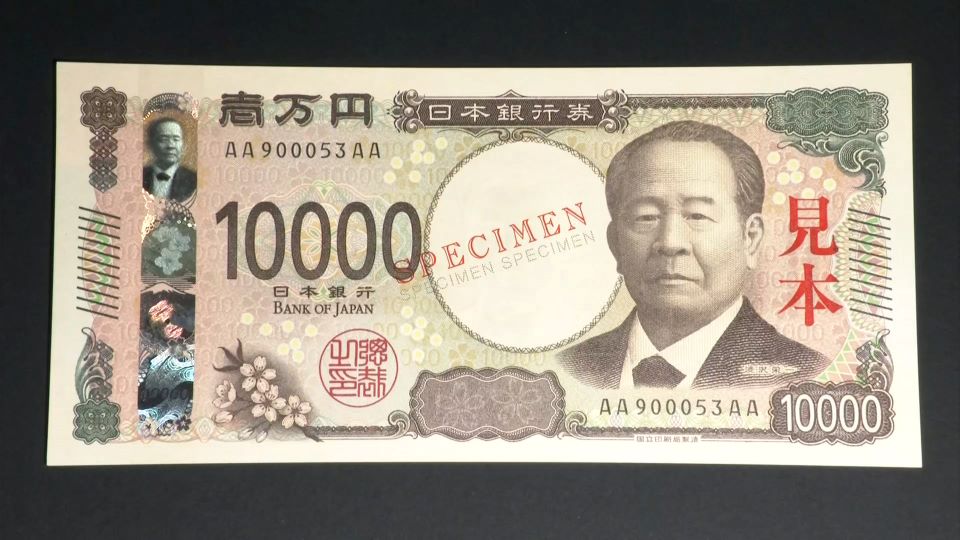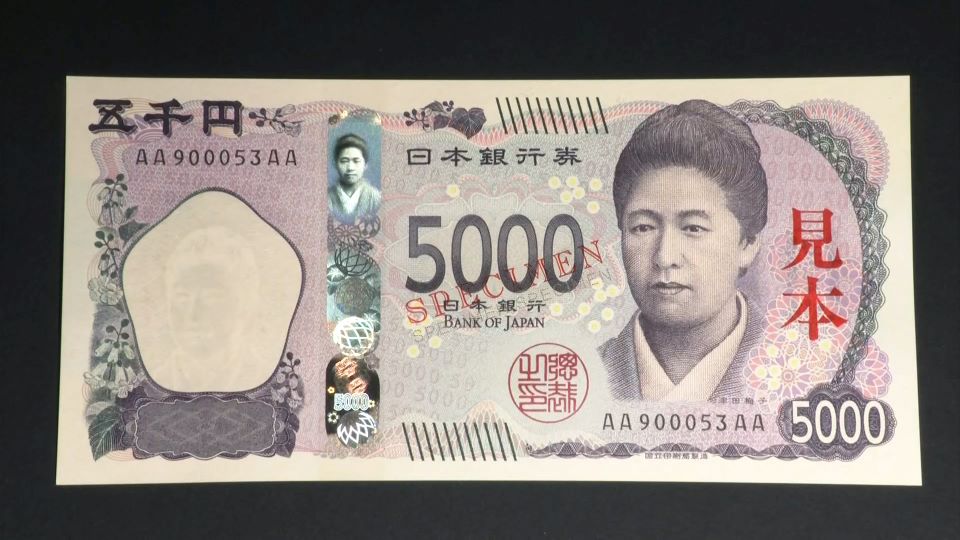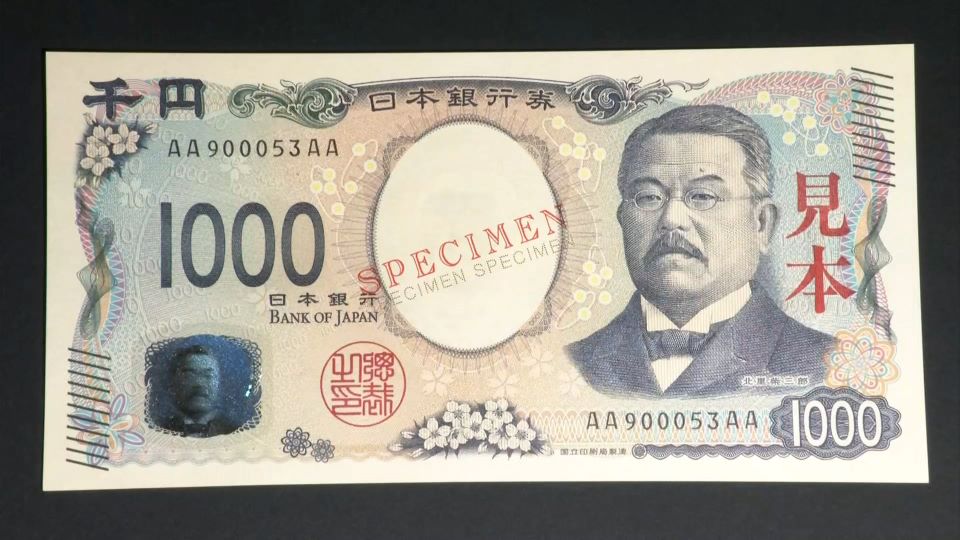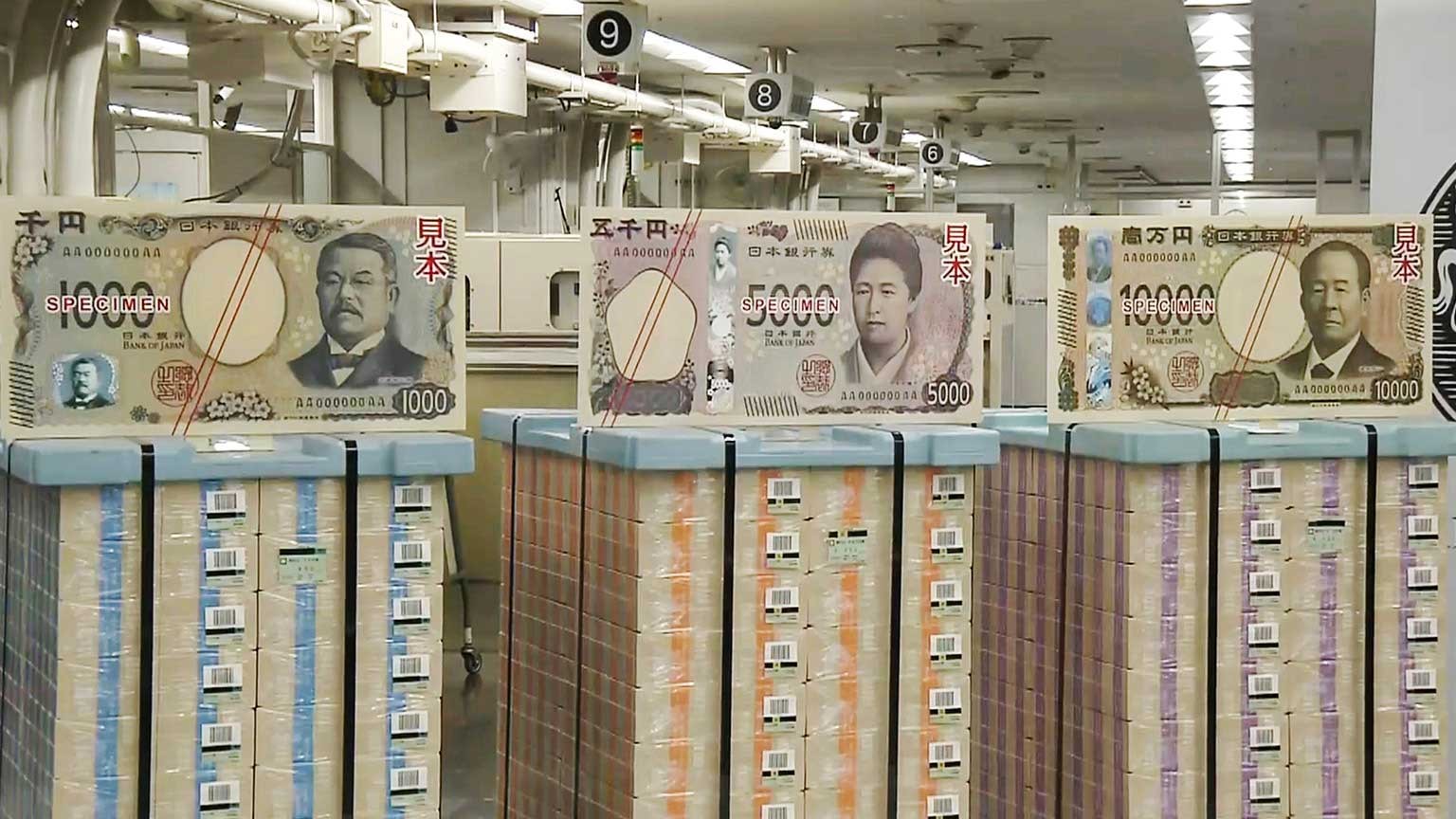Three new faces
The 10,000-yen note now features financier Shibusawa Eiichi, who replaces philosopher Fukuzawa Yukichi. It's the first change in 40 years for this denomination.
The 5,000-yen note changes from writer Higuchi Ichiyo to educator Tsuda Umeko, and the 1,000-yen note from Noguchi Hideyo to Kitasato Shibasaburo, both bacteriologists. These bills have been in circulation for 20 years.
Shibusawa Eiichi

Shibusawa is known as the "father of the modern Japanese economy." He was involved in the establishment of many banks and companies between the 19th and 20th centuries. Shibusawa served Tokugawa Yoshinobu, Japan's last shogun. After the Meiji Restoration, Shibusawa worked for the new government before founding the National Bank, the first in Japan. He was said to have been involved in some 500 businesses, including banking, railways and textiles. He also helped establish numerous educational institutions, including Hitotsubashi University.
Tsuda Umeko

Tsuda Umeko was an educator and is regarded as a pioneer of women's education in Japan.
In 1871, at the age of six, she joined the Japanese mission led by Ambassador Iwakura Tomomi and travelled to the US. She was one of the first Japanese females to study abroad.
Tsuda later founded what is now Tsuda University, and worked to improve the status of women. She also promoted English language education.
Kitasato Shibasaburo

Kitasato Shibasaburo is known as the "father of modern medicine" in Japan. He made great contributions to infectious disease prevention. He studied in Germany under the famous bacteriologist Robert Koch and developed pure culture techniques and serum therapy for tetanus bacteria.
Choosing the portraits
According to the National Printing Bureau, the subjects should be well-known to the Japanese people and someone to take pride in. Their portraits need to be rendered as precisely as possible to prevent counterfeiting. In recent years, the policy of choosing cultural figures from the Meiji Era (1868-1912) onward has taken root.
Past banknotes often featured politicians, such as Ito Hirobumi or Iwakura Tomomi. But highly political or military figures are no longer in vogue. Given these prerequisites, the Ministry of Finance, the Bank of Japan, and the National Printing Bureau narrowed down the list of candidates, with the final decision being made by the finance minister.
The move to revamp the banknotes was led by then-Finance Minister Aso Taro and the late Prime Minister Abe Shinzo.
*Click here to watch the video:
Japanese people line up for new banknotes (July 3, 2024)

